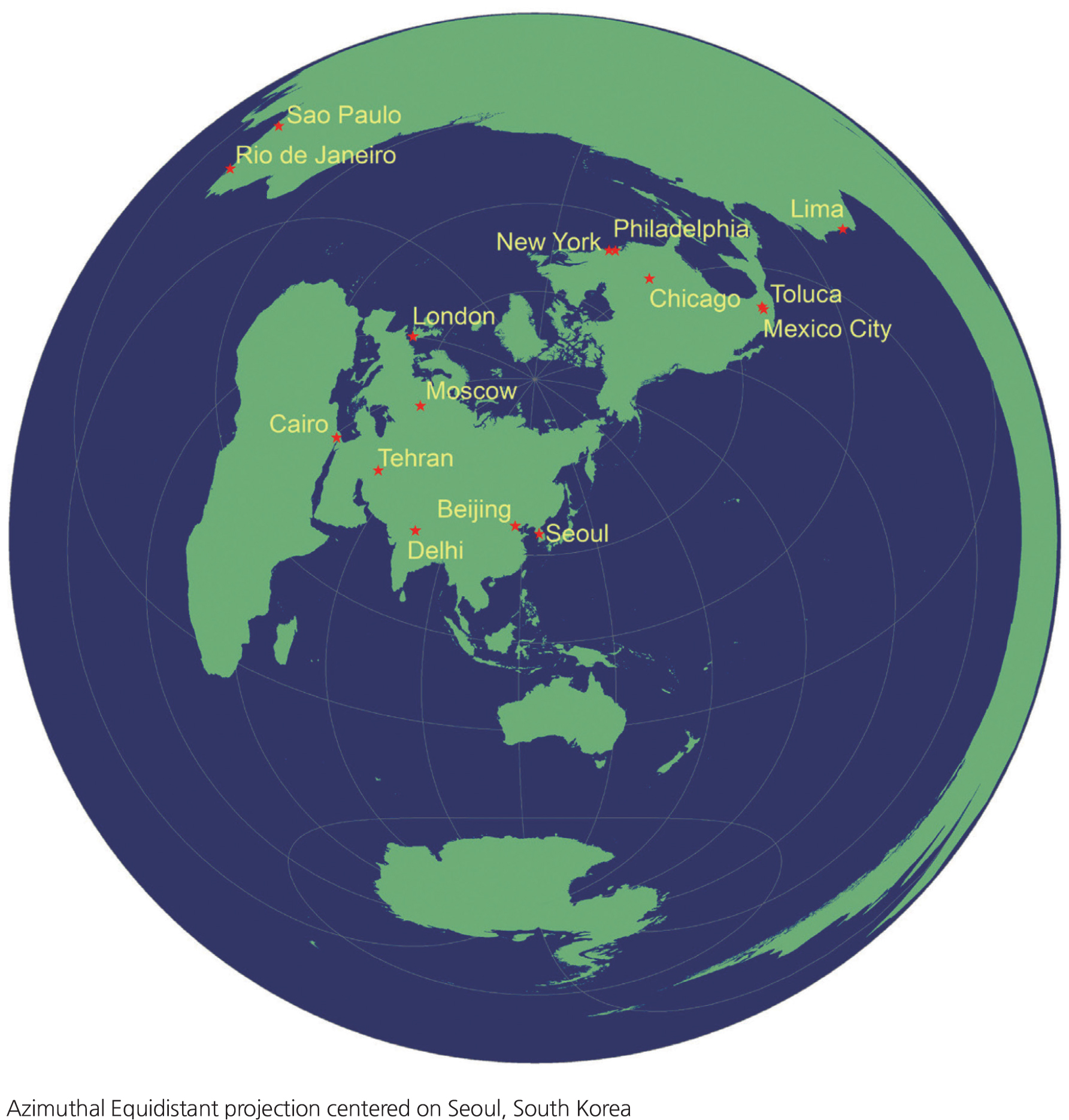Maps can be used to tell a story about a place. Just as there are different ways to tell a story with words, there are different ways to tell a story with maps. The maps on this page all tell different stories about where Korea (shown in red) is located on the globe. The way geographic features are shaped and arranged on a map are called a map projection. The map above uses what’ called the Robinson projection, which is commonly used to show all of the continents.
Of course the real Earth is sphere-shaped, like a ball, so when a cartographer (map maker) draws continents on a flat page their shapes are slightly distorted. The Goode projection shown below is one way to reduce the distortion of the area of continents. It looks like an orange peel, so it’ a good reminder that the map represents the surface of a sphere. You can almost imagine putting the peel back into a sphere shape, attaching the edges of the Pacific.
Both of these maps put the prime meridian, running through Europe and west Africa, at the center of the map. These projections make it look like Europe and West Africa are at the center of the world and that Korea off to the side, far from the Americas. A person reading these maps might picture Korea being away from the center of activity or remote.
The heart-shaped projection above, on the other hand, emphasizes the Pacific Rim, the edge of the Pacific Ocean that borders the Americas, Asia, Australia, and the islands of Oceania. Since Korea lies on the Pacific Rim, this map arrangement shows Korea in a more central position and makes it easy to see how ships can go from Korea directly to ports across the Pacific. It also shows how close Korea is to other places in Asia.
The azimuthal equidistant projection, shown to the left, places Seoul, the capitol
of South Korea, at the center of the map. This projection distorts the shapes and areas of continents. For example, South America is stretched out in a big arc across the top and right of the map. But the projection is good for showing the correct direction (azimuth) and distance from the center point to other places on the map. For example, the shortest route for a plane going from Seoul to New York, 11,000 km away, is to fly over the Arctic Ocean.



